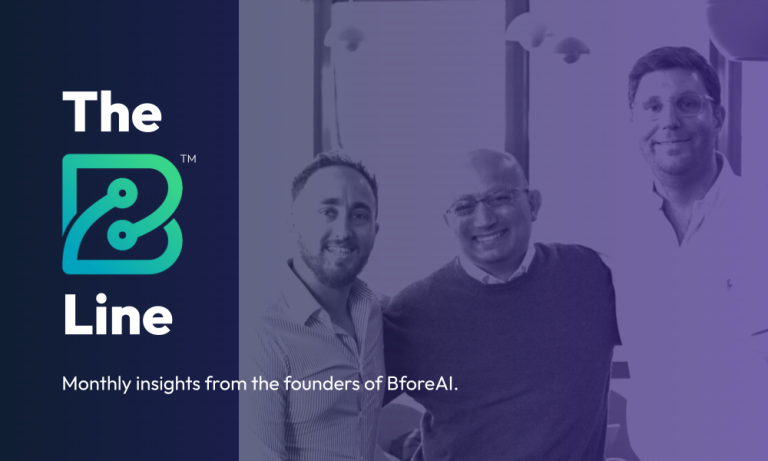Trust and Other Peoples’ Money
The world of finance and its many offshoots rests on two very important pillars: 1. trust and, 2. other peoples’ money. Obviously, these two things go hand-in-hand. Without trust, a bank or investment house will not be given the opportunity to handle other peoples’ money! It could be said, then, that trust is the most important currency a financial institution can possess. Without trust, everything else is lost.
Whether it is being done voluntarily or compelled by market forces like laws or regulations, when it comes to cybersecurity, financial services organizations are putting trust first. While the cybersecurity environment is constantly morphing, innovating and reinventing itself, brand impersonation remains a persistent and costly threat for banks and other financial institutions because it puts that fundamental trust at risk. The idea of a financial institution’s own brand and likeness being used against them to defraud or scam their own customers is the very definition of a breach of trust and demands action toward protecting the brand (and the customers) from these attacks.
When considering online brand protection, the concept of typosquatting often comes to mind – those deceptively similar domain names designed to lure customers into phishing scams, account takeovers, or the disclosure of sensitive financial information. While identifying and detecting these slight misspellings is undoubtedly a component of a robust security posture, for financial organizations, relying solely on this approach is akin to trying to prevent the theft of a vault full of treasure with one simple lock. It’s far too limited and will not match the true level of sophistication with which typosquatting tactics are deployed.
We’re going to explain how BforeAI’s PreCrime platform offers a significantly more sophisticated and preemptive approach to protect against the complex cyber threats targeting financial services organizations, going far beyond traditional domain monitoring.
The Critical Limitations of Traditional Domain Monitoring for Financial Institutions
Traditional typosquatting and domain monitoring tools generally focus on identifying domain names that bear a phonetic (mimicking a name based on how it sounds when spoken, “syber” instead of “cyber”) or orthographic (an intentional spelling or character error that closely imitates the real name or word, like “cybeɾ” instead of “cyber”) resemblance to a financial institution’s official web presence. These tools scan for variations involving letter swaps, added or missing characters, hyphens, or the use of different top-level domains (like using “.co” instead of “.com”).
While typosquatting and domain monitoring tools can flag potential risks, they often generate a significant amount of “noise” by highlighting domains that pose no actual threat. These tools lack nuance and present several limiting challenges, including:
- Excessive False Positives: Many similar-looking domains are harmless, serving purposes like parked domains, internal development environments, or even legitimate review and sentiment sites. For financial institutions, the sheer volume of these false positives can distract and overwhelm security teams, diverting critical resources from genuine threats that could have severe financial and reputational consequences if left unaddressed.
- Reactive Approach: Domain monitoring tools operate reactively, identifying potentially malicious domains after they have been registered. Against the dynamic backdrop of cybercrime targeting financial assets, this delay can be catastrophic, allowing attackers the time they need to successfully launch phishing campaigns and compromise customer accounts.
- Limited Scope in an Elaborate Threat Environment: These tools primarily focus on domain name similarities, neglecting the broader, more sophisticated tactics used by cybercriminals to target financial institutions. Examples of these tactics include the abuse of subdomains, the use of compromised legitimate websites, and sophisticated social engineering tactics that extend beyond simple typographical swaps.
PreCrime™ Brand: A Predictive and Preemptive Cybersecurity Platform for Finance
BforeAI’s PreCrime Brand solution offers a fundamentally different and far more effective approach for financial services organizations to protect their external web assets. It leverages predictive AI to identify and neutralize cyber threats before they can be weaponized against the institution and its customers. Instead of relying on static blacklists and signature-based detection, PreCrime analyzes vast datasets to identify and score subtle patterns, trends, and anomalies that indicate malicious intent targeting protected financial services customers.
Key Differences: PreCrime vs. Traditional Domain Monitoring for Financial Services
PreCrime™ Brand
Left of Boom
vs.
Traditional Domain Monitoring
Right of Boom
Preemptive
Blocks attacks before they launch by predicting which infrastructure is being set up for malicious campaigns.
Reactive
Reacts to already registered domains that resemble the institution’s brand.
Behavioral Analysis
Analyzes the entire digital footprint associated with a malicious domain or actor, including domain ecosystems, registration patterns, network activity, SSL certificate usage, and other behavioral indicators.
String Matching
Primarily focuses on superficial string and typo matching of domain names.
Contextual Intelligence
Evaluates the broader context of domain registrations, registrant details, hosting infrastructure, and internet interactions, identifying connections to known threat actors and financial crime patterns.
Isolated Detection
Generally identifies similar domain names without deeper analysis into the intent or infrastructure behind them.
Preemptive vs. Reactive:
- PreCrime Brand: Predicts and preempts attacks targeting financial institutions before they launch, predicting which infrastructure is being set up for malicious campaigns.
- Traditional Domain Monitoring: Reacts to already registered domains that resemble the institution’s brand.
Behavioral Analysis vs. String Matching:
- PreCrime Brand: Analyzes the entire digital footprint associated with a malicious domain or actor, including domain ecosystems, registration patterns, network activity, SSL certificate usage, and other behavioral indicators specific to financial fraud tactics.
- Traditional Domain Monitoring: Primarily focuses on superficial string and typo matching of domain names.
Contextual Intelligence vs. Isolated Detection:
- PreCrime Brand: Evaluates the broader context of domain registration, registrant details, hosting infrastructure, and internet interactions, identifying connections to known threat actors and financial crime patterns.
- Traditional Domain Monitoring: Primarily identifies similar domain names without deeper analysis into the intent or infrastructure behind them.
Real-World Examples of PreCrime's Superiority in Protecting Financial Institutions:
Predicting Phishing Campaigns Targeting Banking and Finance Customers:
PreCrime can detect clusters of newly registered domains exhibiting registration patterns, hosting locations, and SSL certificate usage consistent with infrastructure previously used in large-scale phishing attacks targeting specific financial institutions. This allows for preemptive action to block these threats before they reach customers.
Example: Identifying domains using similar naming conventions and hosting providers as those used in past attacks impersonating the bank’s login portal.
Detecting and Preventing Account Takeover Attempts:
PreCrime can identify malicious domains and infrastructure being set up to mimic online financial services portals or customer support pages. By analyzing registration details, network traffic, and associated content, PreCrime can flag these threats early, preventing account takeover attempts and financial losses for customers.
Example: Pinpointing newly registered domains with login forms that closely resemble the bank’s legitimate login page, coupled with suspicious registration patterns.
Identifying Fraudulent Mobile Applications and Related Infrastructure:
While not solely domain-focused, PreCrime’s analysis extends to identifying infrastructure that supports the distribution and operation of fraudulent mobile banking applications, a significant threat vector for financial institutions. This includes identifying associated command-and-control servers and distribution channels.
Example: Detecting a newly registered domain hosting an APK file that imitates a well-known banking app that resolves to an IP also used for phishing pages and credential harvesting. This domain is linked to a Telegram channel used to distribute the app via SMS phishing (smishing) campaigns.
Early Detection of Business Email Compromise (BEC) Infrastructure:
PreCrime can spot newly registered domains that closely resemble employee email addresses or internal systems, often a precursor to BEC attacks targeting financial institutions’ internal operations and vendor relationships.
Example: Flagging a domain, “payrolldepartment-secure[.]com”, registered with a lookalike of the bank’s HR email subdomain, which is then used to send spoofed emails requesting changes to direct deposit details for high-level executives.
Why PreCrime™ Doesn’t Flag Benign Domain Variations for Financial Institutions
Flagging benign domain variations is a major pain point for security teams because it leads to alert fatigue. This, in turn, results in wasted time and resources as teams investigate harmless domains instead of focusing on actual threats. Over time, frequent false positives erode trust in detection tools, leading to increased risk of overlooking real issues.
With an overload of flagged domains, prioritization becomes difficult, causing decision paralysis and inefficiency (the definition of alert fatigue!). This has real-world consequences as it not only drives operational costs higher due to the need for more manual reviews, but also dilutes security efforts by focusing on superficial similarities instead of malicious behavior or context.
PreCrime’s sophisticated predictive AI technology focuses on identifying infrastructure and behaviors indicative of real-world harm to the financial institution and its customers, not just superficial similarities. It analyzes:
- DNS structure and historical reputation
- Registrant details and their associations with known malicious actors
- How the domain and associated infrastructure interact with the broader internet, looking for patterns of malicious activity
- Content analysis and its resemblance to known phishing or fraud tactics targeting financial services
This intelligent approach minimizes false positives, ensuring that security teams within financial institutions can focus on actionable threats that pose a genuine risk to their operations and customers’ assets, rather than being sent on “wild goose chases”.
Conclusion: Embracing a Prediction-Driven Future for Financial Cybersecurity
While traditional domain monitoring plays a minor role in modern brand protection best practice, it is insufficient to defend financial institutions from the sophisticated and novel threats they are constantly confronted with. BforeAI’s PreCrime platform offers a critical advantage by providing a comprehensive, predictive and preemptive approach that goes far beyond simple string matching.
By leveraging predictive AI and behavioral analysis tailored to the financial sector, PreCrime empowers banks and other financial services organizations to stay one step ahead of cybercriminals, blocking attacks before they can erode trust, cause financial damage, and harm their reputations. With trust and other peoples’ money on the line, a preemptive approach steered by predictive technology is not just an advantage – it’s a fundamental necessity for the security and resilience of both financial services organizations and their customers.






